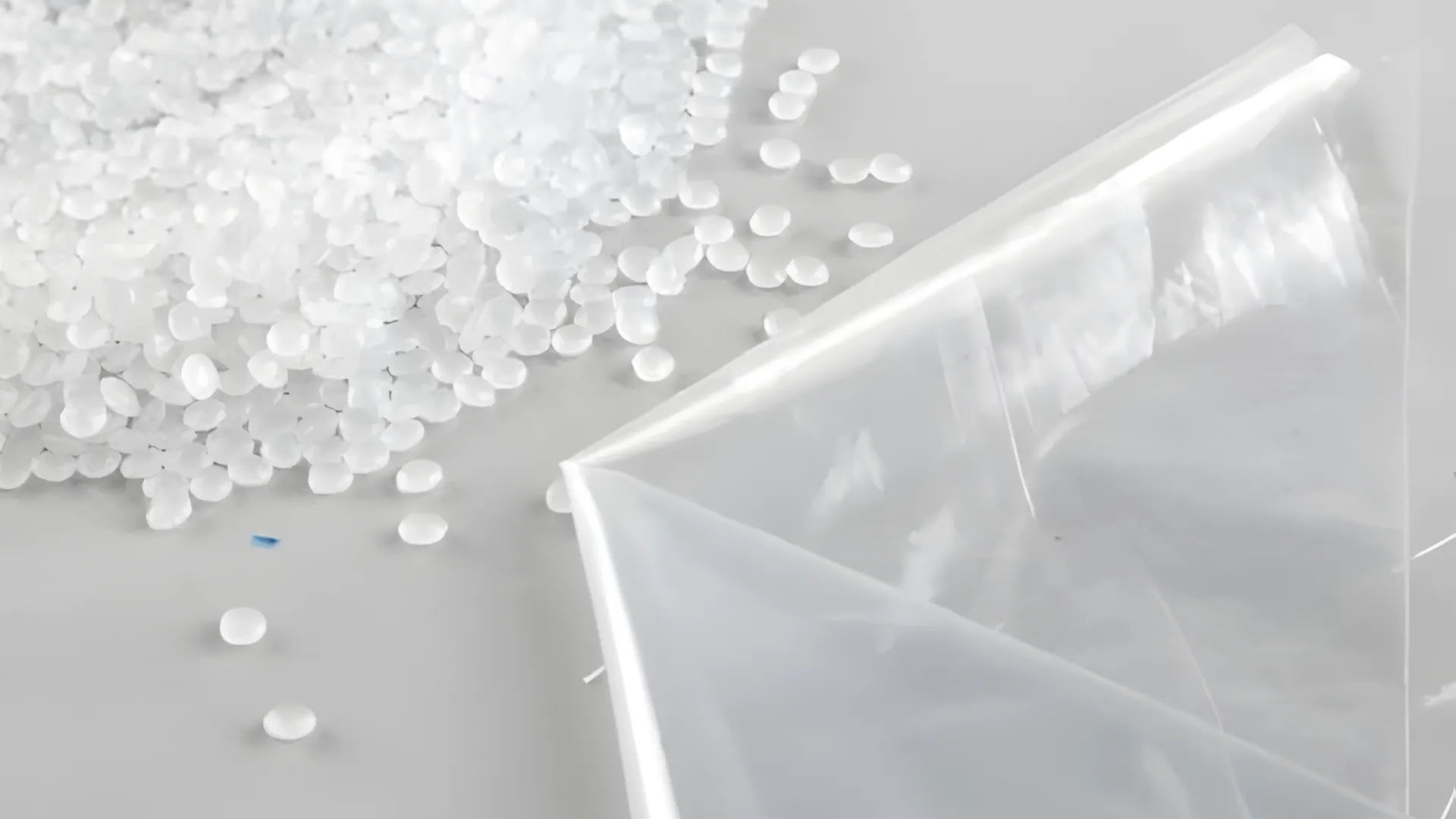Polyethylene (PE) and Polypropylene (PP) films are ubiquitous in packaging, agriculture, and various industrial applications. From stretch wrap and carrier bags to agricultural films and industrial liners, their lightweight, flexible, and durable nature makes them incredibly useful. However, these same properties present significant challenges when it comes to recycling. As the demand for sustainable practices and circular economy solutions intensifies, efficiently processing these film materials is paramount.
At Rumtoo, we understand the intricacies of plastic recycling. For businesses looking to turn PE/PP film waste into high-quality, reusable pellets, the choice of machinery is critical. This is where the Cutter-Compactor Plastic Pelletizing Machine truly shines. Let’s delve into why this technology is ideally suited for tackling the complexities of PE/PP film recycling.
Understanding the Unique Challenges of Recycling PE/PP Films
Before we explore the solution, it’s important to grasp why PE/PP films are notoriously difficult to recycle using conventional methods:
- Low Bulk Density: Films are light and voluminous, meaning they take up a lot of space for their weight. This makes it difficult to feed consistently into a standard extruder.
- Feeding Inconsistencies: Their tendency to tangle, bridge, or “fluff up” in hoppers leads to uneven material flow, disrupting the extrusion process and affecting output quality.
- Moisture Content: Films, especially post-consumer or agricultural ones, can retain moisture, which can cause voids and imperfections in the final pellets if not managed.
- Contamination: While pre-washing is crucial, some residual light contamination or printing inks can still be present.
- Heat Sensitivity: Films can degrade if exposed to excessive or uneven heat during the initial processing stages.
A standard pelletizing line without adequate pre-processing struggles to overcome these hurdles efficiently.
Enter the Cutter-Compactor: How Does It Work?
A Cutter-Compactor Pelletizing Machine (often called an agglomerating pelletizer or shredder-compactor pelletizer) integrates several crucial steps into a single, efficient unit, specifically designed to address the challenges posed by low-density materials like PE/PP films.
Here’s a simplified workflow:
- Voeding: Film waste (loose, baled, or rolled) is typically fed into the cutter-compactor unit via a conveyor belt.
- Cutting & Shredding: Inside the compactor drum, rotating and stationary blades cut and shred the film into smaller, more manageable pieces.
- Friction & Densification (Agglomeration): The continuous high-speed cutting action generates frictional heat. This heat softens and partially melts the film scraps, causing them to shrink, densify, and agglomerate into irregular, crumb-like particles. This is a crucial step, as it dramatically increases the bulk density of the material.
- Pre-heating & Degassing: The frictional heat also pre-heats the material and helps to evaporate surface moisture, acting as a preliminary degassing stage.
- Direct Feeding to Extruder: The hot, densified material is then directly and continuously fed from the compactor into the connected extruder screw. Because the material is already hot and relatively homogenous, it melts more efficiently and consistently within the extruder.
- Extrusion, Filtration, Pelletizing: The extruder melts, homogenizes, and pushes the plastic through a screen changer (to filter out contaminants) and then through a die head. The molten strands are then cut into pellets (typically using a water-ring pelletizer or under-water pelletizer for PE/PP).
- Cooling & Drying: The freshly cut pellets are cooled and dried, ready for storage or re-use.
Key Advantages of Using a Cutter-Compactor for PE/PP Films
The integrated design of a cutter-compactor system offers numerous advantages over other recycling methods when processing PE/PP films:
- Enhanced Feeding & Throughput:
- The primary benefit is solving the low bulk density issue. By densifying the fluffy film into heavier agglomerates, the cutter-compactor ensures a consistent, forceful feed into the extruder. This prevents bridging and irregular flow, leading to significantly higher and more stable throughput.
- Improved Melt Quality & Homogenisation:
- The pre-heating and partial plasticizing in the compactor means the material enters the extruder in a much better state. This reduces the thermal and mechanical stress on the extruder screw, leading to a more homogenous melt with fewer unmolten particles and improved dispersion of any additives or masterbatch.
- Energie-efficientie:
- Because the material is pre-heated by friction in the compactor, the extruder requires less energy to bring the plastic to its final melting temperature. This can result in noticeable energy savings compared to feeding cold, loose film (if that were even practically feasible at scale).
- Reduced Labour and Footprint:
- Combining cutting, densifying, and feeding into one unit eliminates the need for separate shredders, agglomerators, and complex conveying systems between them. This reduces the overall machinery footprint, capital investment, and labor required for operation and maintenance.
- Effective Moisture Removal:
- The heat generated during the compacting process helps to evaporate a significant amount of surface moisture from the films. This pre-drying step is vital for producing high-quality, void-free pellets. Some advanced designs also incorporate venting ports in the compactor or extruder for enhanced degassing.
- Veelzijdigheid van folietypes en condities:
- De snij-verdichters kunnen een breed scala aan PE/ pp-films verwerken, waaronder LDPE, LLDPE, HDPE en PP, of ze nu bedrukt zijn, licht vervuild (na het wassen) of met verschillende diktes. Het agressieve snij - en verdichtingsproces is robuust.
- Betere korrelkwaliteit:
- De combinatie van een consistente toevoer, uniforme smelt en een efficiente ontgassing zorgt voor een uniforme grootte en vorm van de pellets met een goede dichtheid en minder defecten. Dit maakt ze meer waardevol bij re-integratie in het productieproces.
Snijmachine - verdichting mechanisme granulaten met alternatieve methoden voor de film
- Directe voeding van standaard extruders: Door de lage stapeldichtheid en problemen met de toevoer, is het niet praktisch voor de folie, wat resulteert in een zeer lage productie en slechte kwaliteit.
- Scheiden shredder + voeden machine + extruder: Beter dan directe toevoer, maar nog steeds niet bieden de voordelen van verdichting en voorverwarmen van de snij-compacteermachine, potentieel resulteert in een lagere doorvoer en een hoger energieverbruik in de extruder.
- Scheider + condensator + pelleteerder: Dit is een werkbare maar complexere opstelling. Het gaat om meerdere onafhankelijke machines die meer ruimte nodig hebben, meer materiaalbehandeling tussen de fasen, potentieel hoger energieverbruik en een complexere synchronisatie. De snij-verdichter integreert deze stappen nog meer naadloos.
| Feature | Cutter-compactor granuleermachine | Papierversnipperaar + feeder + extruder | Scheiden versnipperaar + condensator + pelletisering |
| Behandeling van membranen | Zeer goed | matig | goed |
| Verhoging van de dichtheid | hoog | laag | Hoog (in samenhang) |
| Consistentie in voeding | Zeer goed | Van eerlijk naar goed | Goed (post Agglomerator) |
| Energie-efficiëntie | Van uitstekend tot zeer goed | matig | Van eerlijk naar goed |
| De voetafdruk | compact | matig | grote |
| Stappen in het proces | integratie | meervoudig | Veel verschillende |
| Typische doorvoer | hoog | Middelmatig tot laag | Midden allerhoogste |
| korrelmassa | Zeer goed | Van eerlijk naar goed | goed |
Kies de juiste snijmachine — compactor voor uw behoeften met Rumtoo
Bij de keuze van een snij-compacteermachine voor PE/ pp-folie moet rekening worden gehouden met de volgende factoren:
- Vereiste capaciteit: Pas de output van de machine (kg/uur) aan uw verwerkingsbehoeften aan.
- Type en toestand van de film: Houd rekening met de zuiverheid, het vochtgehalte en het drukniveau van uw grondstoffen.
- Niveau van automatisering: Zoek functies om de werking te vereenvoudigen en menselijke interventie te verminderen.
- Vereisten voor ontgassing: Voor het bedrukken van zware of licht vochtige films is een systeem met een verbeterde ontgassing (b. V. De vacuumontgassing in twee fasen op de extruder) voordelig.
- Filtersysteem: Krachtige smeltfiltersystemen zijn essentieel voor het verwijderen van verontreinigingen en het garanderen van de zuiverheid van de deeltjes.
- Fabrikant ondersteuning en expertise: In samenwerking met deskundige leveranciers zoals Rumtoo kunnen zij technische ondersteuning, reserveonderdelen en advies voor procesoptimalisatie bieden.
Conclusie: een goed geinformeerde keuze voor PE/ pp-membraanrecycling
Voor bedrijven die serieus overwegen om PE/ pp-folie efficient en winstgevend te recyclen Cutter-Compactor Plastic Pelletizing Machine Biedt een reeks overtuigende voordelen. Het is in staat om de uitdagingen te overwinnen die inherent zijn aan laagdichte foliematerialen door efficient te snijden, verdichten, voorverwarmen en continu de extruder te voeden, wat resulteert in een hogere doorvoer, superieure korrelkwaliteit en verhoogde operationele efficientie.
Bij Rumtoo richten we ons op het leveren van robuuste en betrouwbare kunststof granuleermachines die voldoen aan uw specifieke eisen. Als u op zoek bent naar een upgrade van uw membraanrecyclingcapaciteit of het opzetten van een nieuwe verwerkingslijn, dan zijn onze snij-verdichtingssystemen een slimme investering voor een meer duurzame en winstgevende toekomst.
Klaar om PE/ pp-afvalmembranen om te zetten in waardevolle grondstoffen? Neem contact op met het team rum Neem vandaag nog contact met ons op en ontdek hoe onze snij-compactor granuleermachines uw recyclingactiviteiten drastisch kunnen veranderen!

